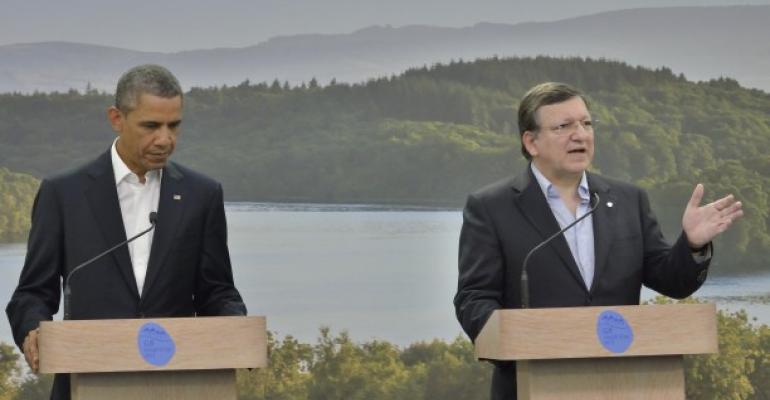OTTAWA – Negotiators tackle automotive trade restrictions during talks to forge a Transatlantic Trade & Investment Partnership trade deal between the U.S. and the European Union.
The European Commission, the EU’s executive branch, issues detailed progress reports on discussions held Oct. 14-23 in Miami and Washington, following the Oct. 5 agreement on the Trans-Pacific Partnership. Ratification of the Pacific Rim trade deal faces an uncertain future in the U.S. Congress.
In the latest trans-Atlantic talks, the EC says regulators discussed the potential mutual recognition of EU and U.S. automotive standards, notably on braking systems, and harmonization of rules, such as for seatbelt anchorages.
Negotiators also discussed how TTIP could promote research projects of joint interest such as protections for vulnerable road users and automated driving.
Progress is being made on agreeing to cuts in EU-U.S. trade tariffs, with second offers now being exchanged covering 97% of tariff lines, including vehicles and auto parts. The U.S. and EU also have exchanged proposals for product-specific rules of origin, an issue of critical importance to the automotive sector. Other general technical barriers to trade were discussed. “Technical progress was made in most areas, though significant work remains ahead,” the EC reports.
The American Automotive Policy Council is hailing the latest discussions on harmonizing regulatory requirements for braking and seatbelt systems as important progress toward smoother trade under a TTIP deal.
The council hopes to see continued harmonization in areas such as vehicle accident protection and avoidance: “The aspiration is…a vehicle produced in one market and meeting those regulatory requirements would be available for sale in the other,” council President Matt Blunt tells WardsAuto.
Charles Uthus, the council’s vice president-international policy, notes both European and American automakers support harmonizing regulations. “Both the U.S. and EU industries are coming together, working towards as much regulatory convergence as possible, primarily on the safety front,” he says.
Agreement in such areas of regulation can help pave the way to harmonizing more complex requirements later, Uthus says, “These are important not only in themselves but in terms of setting a pathway forward for future work on other standards that are a bit more difficult and may not be achieved in the timeframe of the negotiations.”
Blunt adds: “There would be some benefit if TTIP just tackled tariffs, but the real benefit for producers, consumers and the two economies is to have a really robust regulatory convergence exercises before the agreement and on an ongoing basis” following its implementation.
A spokesman for the ACEA, the European automakers’ trade group, says the TTIP negotiations provide opportunities for European automakers in the U.S. market, as the goal is to eliminate tariffs as well as costly non-tariff barriers.
“The European Commission’s impact assessment has showed that the ad valorem tariff equivalent of the existing regulatory divergences amount to 26%,” the spokesman says. “This figure is considerably higher than most automobile tariffs between the EU and the U.S.”
Looking ahead, EU and U.S. negotiators agree to accelerate their work between negotiating rounds, with several groups meeting again before the next round in February in Brussels.
Also, EU and U.S. officials met earlier this month with Japanese regulators at the U.N. Economic Commission for Europe World Forum for Harmonization of Vehicle Regulations session in Geneva. The three sides are discussing how the U.N. body might promote truly global harmonized vehicle regulations, with a follow-up meeting planned for January.
– with Kitty So





